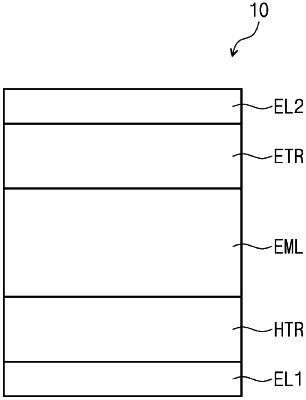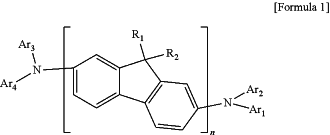| CPC H10K 85/615 (2023.02) [C07C 211/06 (2013.01); C07D 209/86 (2013.01); C07D 401/12 (2013.01); C07D 409/14 (2013.01); C09K 11/06 (2013.01); H10K 85/626 (2023.02); H10K 85/633 (2023.02); H10K 85/636 (2023.02); H10K 85/6572 (2023.02); C07C 2603/18 (2017.05); C09K 2211/1007 (2013.01); C09K 2211/1011 (2013.01); C09K 2211/1018 (2013.01); H10K 50/155 (2023.02); H10K 50/156 (2023.02); H10K 85/624 (2023.02); H10K 85/654 (2023.02); H10K 85/655 (2023.02); H10K 2102/351 (2023.02)] | 17 Claims |

|
1. An organic light emitting diode comprising:
a first electrode;
a hole transport region disposed on the first electrode;
an emission layer disposed on the hole transport region;
an electron transport region disposed on the emission layer; and
a second electrode disposed on the electron transport region,
wherein the hole transport region comprises:
a first hole transport layer having a first refractive index; and
a second hole transport layer having a second refractive index greater than the first refractive index and being disposed under the first hole transport layer,
wherein the first hole transport layer comprises a fluorene compound represented by Formula 1 below:
 wherein, in Formula 1 above,
R1 and R2 are each independently a substituted or unsubstituted alkyl group having 1 to 30 carbon atoms,
n is an integer of 1 to 3, and
Ar1 to Ar4 are each independently a hydrogen atom, a deuterium atom, a halogen atom, a cyano group, a substituted or unsubstituted amino group, a substituted or unsubstituted aryl group having 6 to 60 carbon atoms, a substituted or unsubstituted heterocyclic group having 2 to 60 carbon atoms, or are bonded to an adjacent group to form a ring, and
wherein R1 and R2 are each independently an unsubstituted n-butyl group or a n-pentyl group substituted with CF3, when n is 1.
|